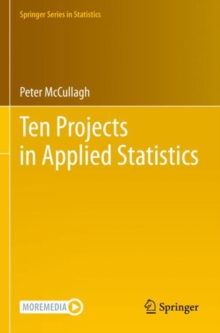
Comparing Distributions Paperback / softback
by Olivier Thas
Part of the Springer Series in Statistics series
Paperback / softback
Description
Comparing Distributions refers to the statistical data analysis that encompasses the traditional goodness-of-fit testing.
Whereas the latter includes only formal statistical hypothesis tests for the one-sample and the K-sample problems, this book presents a more general and informative treatment by also considering graphical and estimation methods.
A procedure is said to be informative when it provides information on the reason for rejecting the null hypothesis.
Despite the historically seemingly different development of methods, this book emphasises the similarities between the methods by linking them to a common theory backbone.
This book consists of two parts. In the first part statistical methods for the one-sample problem are discussed.
The second part of the book treats the K-sample problem.
Many sections of this second part of the book may be of interest to every statistician who is involved in comparative studies. The book gives a self-contained theoretical treatment of a wide range of goodness-of-fit methods, including graphical methods, hypothesis tests, model selection and density estimation.
It relies on parametric, semiparametric and nonparametric theory, which is kept at an intermediate level; the intuition and heuristics behind the methods are usually provided as well.
The book contains many data examples that are analysed with the cd R-package that is written by the author.
All examples include the R-code. Because many methods described in this book belong to the basic toolbox of almost every statistician, the book should be of interest to a wide audience.
In particular, the book may be useful for researchers, graduate students and PhD students who need a starting point for doing research in the area of goodness-of-fit testing.
Practitioners and applied statisticians may also be interested because of the many examples, the R-code and the stress on the informative nature of the procedures.
Information
-
Item not Available
- Format:Paperback / softback
- Pages:354 pages, XVI, 354 p.
- Publisher:Springer-Verlag New York Inc.
- Publication Date:25/02/2012
- Category:
- ISBN:9781461424499
Other Formats
- Hardback from £112.59
- PDF from £76.08
Information
-
Item not Available
- Format:Paperback / softback
- Pages:354 pages, XVI, 354 p.
- Publisher:Springer-Verlag New York Inc.
- Publication Date:25/02/2012
- Category:
- ISBN:9781461424499










